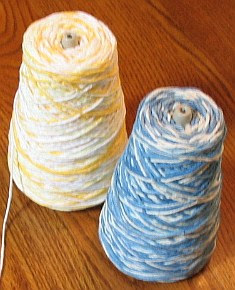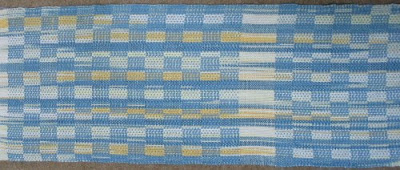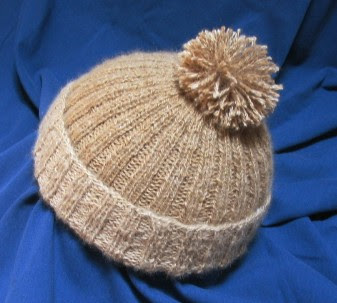My latest Christmas afghan is just off the loom! I haven't finished the ends or washed it yet, but here it is. This is the side I looked at while weaving .......

It has solid colored weft faced twill zig zags. You can see the space dyed warp stripes subtly underneath.
Now here is the other side .......

Now here is the other side .......

... where the zig zags are warp faced, showing off the color changes in the space dyed yarn. Much more interesting to my eye. You can still see where I was unable to perfectly match the space dyed sections, but I am happy with it all the same.
 After weaving awhile, I did start to have problems with warp looseness at the selvedges, creating an upward turn to the fell. I am guessing this has something to do with the fact that I have tied on so many warps.
After weaving awhile, I did start to have problems with warp looseness at the selvedges, creating an upward turn to the fell. I am guessing this has something to do with the fact that I have tied on so many warps.

My solution was to use an S-hook and a half filled half gallon milk jug to take up the slack. This worked very well and straightened the fell out nicely.
I think this is the end of experimenting with space dyed commercial yarns for awhile. I didn't have much success measuring the warp ends individually, nor was measuring the sections in bouts from separate skeins achieve what I wanted. Using them as weft was okay, but the results weren't exciting enough to want to try this again. So, as Peg said in the comments of my last post, that only leaves dying my own warps.
So, that is on my future "to do" list, when I have more time and a better set-up for dyeing.
To finish this afghan, I'm thinking that instead of fringing it like I did the others, I would like to put a crochet edging around it. I'm thinking that a scalloped or picot-type edge would be nice as this would compliment the zig zags. However, this will have to wait until the weather cools down and I won't mind working with an afghan in my lap. In the meantime, on to the next afghan.
Related Post:
More Space Dyed Twill Weaving
Finishing the Unfinished Afghan
 After weaving awhile, I did start to have problems with warp looseness at the selvedges, creating an upward turn to the fell. I am guessing this has something to do with the fact that I have tied on so many warps.
After weaving awhile, I did start to have problems with warp looseness at the selvedges, creating an upward turn to the fell. I am guessing this has something to do with the fact that I have tied on so many warps.
My solution was to use an S-hook and a half filled half gallon milk jug to take up the slack. This worked very well and straightened the fell out nicely.
I think this is the end of experimenting with space dyed commercial yarns for awhile. I didn't have much success measuring the warp ends individually, nor was measuring the sections in bouts from separate skeins achieve what I wanted. Using them as weft was okay, but the results weren't exciting enough to want to try this again. So, as Peg said in the comments of my last post, that only leaves dying my own warps.
So, that is on my future "to do" list, when I have more time and a better set-up for dyeing.
To finish this afghan, I'm thinking that instead of fringing it like I did the others, I would like to put a crochet edging around it. I'm thinking that a scalloped or picot-type edge would be nice as this would compliment the zig zags. However, this will have to wait until the weather cools down and I won't mind working with an afghan in my lap. In the meantime, on to the next afghan.
© 29 Aug. 2007 at http://leighsfiberjournal.blogspot.com
Related Post:
More Space Dyed Twill Weaving
Finishing the Unfinished Afghan














































